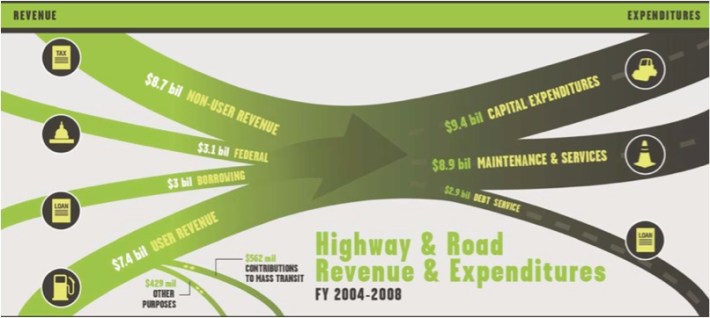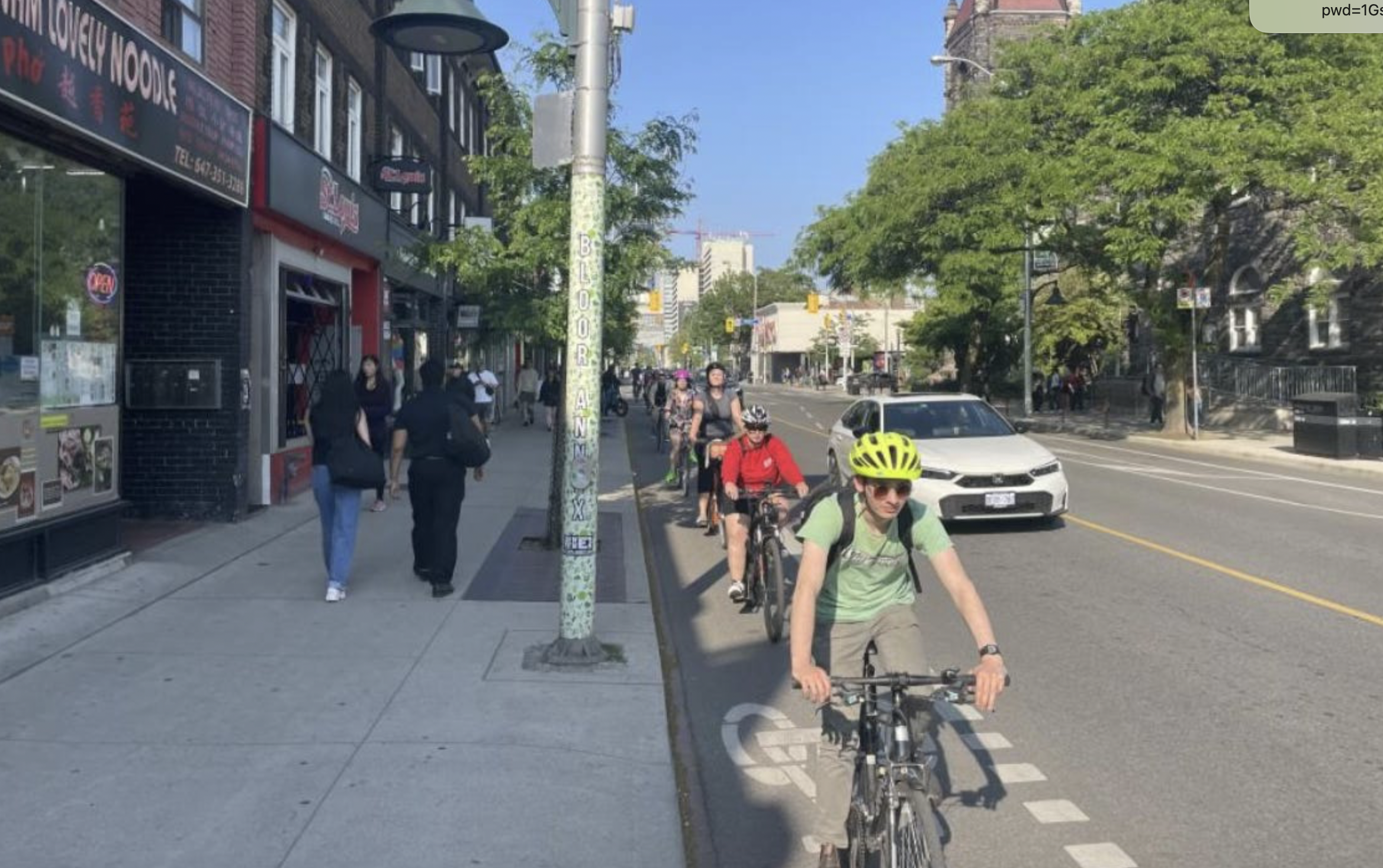
We’ve said it before and we’ll say it again: Roads don’t pay for themselves.
But maybe they should.
“Taxpayers cover costs that should be borne by road users,” asserts the State Smart Transportation Initiative at the University of Wisconsin-Madison. “Road subsidies push up tax rates, squeeze government services, and skew the market for transportation.”
SSTI, along with the smart growth group 1,000 Friends of Wisconsin, published a study in October showing that “between 41 and 55 percent of [Wisconsin’s] road money comes from non-users” [PDF].
Between 2004 and 2008, roads in the state cost an average of $4.24 billion annually. Of this, $1.74 billion came from revenue sources unrelated to road use—primarily property and sales taxes—while another $600 million was borrowed…
The fact is, roads constitute one of the biggest tax burdens we face.
Non-users fork over $779 per household for roads -- as opposed to $50 for transit. But most drivers still believe that transit eats a huge chunk of transportation funding while roads are self-supporting. SSTI wanted to dispel that notion, said study author Bill Holloway.
“So much of the time, when you get into a conversation about transportation, people talk about the subsidy we provide to transit riders,” Holloway said. “Transit is a ‘subsidy’; highways and roads are ‘investments.’ But look at the tiny diversion from highway and road user fees that go to transit – it’s a drop in the bucket – and then realize that a huge portion of everything everyone buys goes to roads [through sales taxes].”
It’s not just Wisconsin – Policy Matters Ohio recently published its own version of the Wisconsin study [PDF], showing that in that state, drivers pay 60 percent of the cost for roads, with government subsidies picking up the tab for the remaining 40 percent. Still think transit is the big money suck?
“The 3-C interstate highway corridor from Cleveland through Columbus to Cincinnati cost 7.5 times more to build than the 3-C passenger rail corridor would have,” the group notes, “and requires 18 times the level of annual appropriations to keep the highway in good repair (more than $200 million annually).”
It’s reasonable for property and even sales taxes to pay for some local streets – after all, whether you drive or not, everybody uses local streets one way or another. But SSTI finds that the degree to which non-users are subsidizing roads goes far beyond what’s reasonable.
The Wisconsin study was released about a week after a controversy broke in the state over whether or not to increase tolling. SSTI realized it was a ripe moment to inject some realism into the conversation about how transportation is funded.
Wisconsin could fully fund its roads by raising the gas tax by about 50 cents per gallon or by imposing highway tolls, according to the study. But Governor Scott Walker is more interested in making sure the paltry amount drivers do spend to support the transportation system they use goes to roads and nothing but roads.
Walker (famous nationwide for returning high-speed rail money to the federal government and then asking for some of it back) has bought into the myth of the long-suffering driver subsidizing the freeloading transit user. He’s proposed barring driver user fees from being used for transit at all – a big gift to the highway lobby. Even the road-builders themselves are only seeking a guarantee in Wisconsin that road-user fees will be used only for transportation. They wouldn't dare go as far as Walker and insist that they be used just for roads.
In addition to Ohio and Wisconsin, several other states are also compiling information on how much of their road costs are actually paid for by road users – Michigan, Illinois, Iowa, and Minnesota will be coming out with their reports soon. Others can find raw data on their states in the appendix of the SSTI report [PDF].





